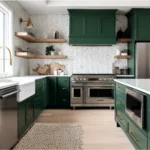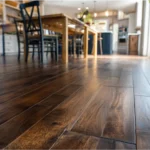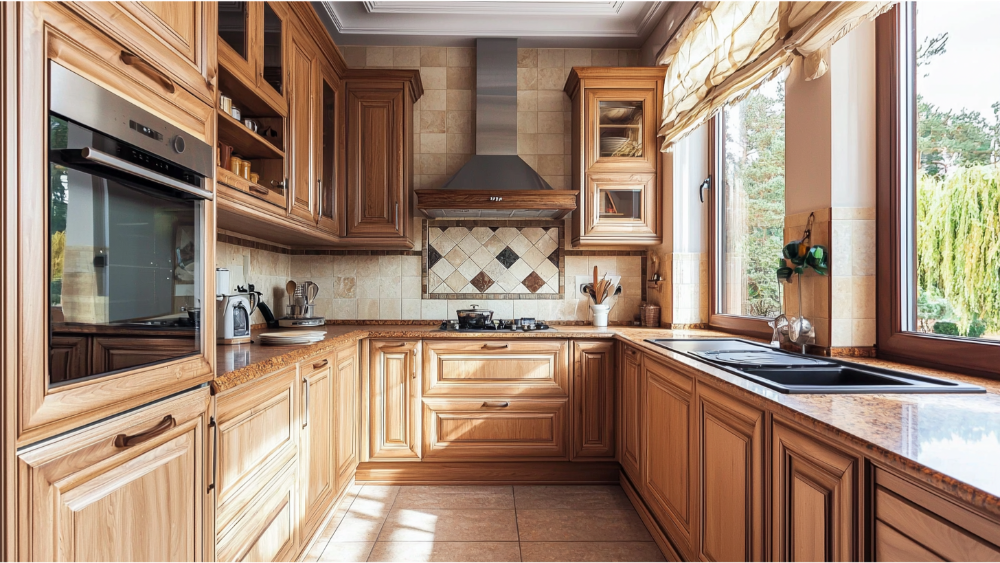
Cleaning wood kitchen cabinets is essential not only for maintaining their appearance but also for preserving their longevity. Over time, cabinets can accumulate dirt, grease, and fingerprints, which can dull their finish and create an unhealthy environment. In this guide, we will explore effective methods and tips to ensure your wood cabinets remain both beautiful and functional, enhancing the overall aesthetic of your kitchen.
Basic Cleaning Techniques

Prepare a Cleaning Solution
To prepare a cleaning solution, start by mixing a few drops of mild dish soap with warm water in a bowl. This gentle solution will effectively cut through grease and grime without damaging the wood finish. It’s important to use a soft cloth or sponge dipped in the warm water solution, ensuring you wring it out well to avoid soaking the cabinets. Regularly wiping down your cabinets with this solution will help maintain their shine and keep them looking fresh.
Use Baking Soda for Stubborn Stains
For stubborn stains that won’t budge with the basic cleaning solution, baking soda can be an excellent remedy. Create a paste by mixing equal parts of baking soda and water, then gently apply it to the stained area using a soft cloth or sponge. Allow the paste to sit for a few minutes to penetrate the stain before gently scrubbing in a circular motion. Rinse the area with a clean, damp cloth to remove any residue, and dry thoroughly to prevent moisture damage to the wood.
Daily Wipe Down
Incorporating a daily wipe-down into your kitchen cleaning routine can significantly extend the life of your wood cabinets. Using a soft, damp cloth to quickly remove any spills or crumbs ensures that dirt does not accumulate over time. Pay special attention to areas near appliances and countertops, where grease and food particles tend to gather. This simple practice helps maintain not only the aesthetics of your cabinets but also a cleaner and healthier kitchen environment.
Deep Clean with Vinegar Solution
For a deeper clean, you can create a vinegar solution that helps to eliminate more stubborn grime and disinfect your cabinets. Combine equal parts of white vinegar and water in a spray bottle, shaking gently to mix. Lightly spray the solution onto the cabinet surfaces, focusing on areas with built-up grease or sticky residues. Wipe down with a soft cloth to reveal a refreshed and gleaming finish, ensuring you dry the wood thoroughly afterward to prevent any potential damage.
Avoid Harsh Chemicals
When cleaning wood cabinets, it’s crucial to avoid harsh chemicals that can damage the finish and compromise the wood’s integrity. Products containing ammonia, bleach, or solvent-based cleaners should be completely avoided, as they may strip away protective coatings or lead to discoloration. Instead, opt for natural and gentle cleaning solutions that effectively remove grime while preserving the beauty of your cabinetry. By using safe methods, you can ensure your clean wood cabinets not only look great but also stand the test of time.
Protective Measures
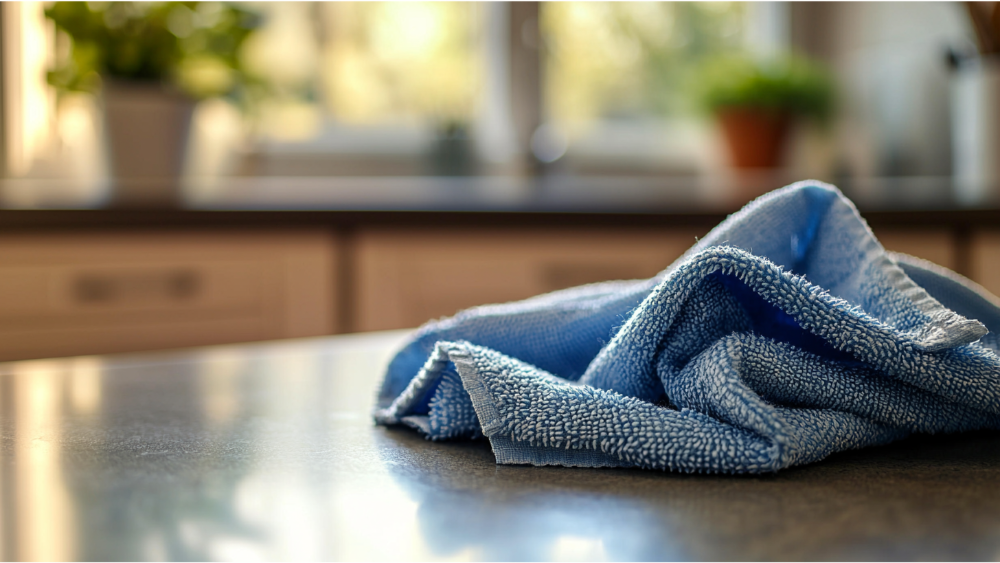
To keep your wood kitchen cabinets in optimal condition, consider implementing the following protective measures:
Use a Microfiber Cloth
Using a microfiber cloth for cleaning your wood kitchen cabinets is highly recommended due to its gentle yet effective texture. Unlike traditional cleaning cloths, microfiber captures dust and dirt without scratching the wood finish, ensuring a thorough clean.
They are more absorbent, allowing for efficient wipe-downs without the need for excessive moisture, which can be harmful to the wood. Incorporating microfiber cloths into your cleaning routine helps maintain the cabinets’ beauty while minimizing the risk of damage.
Implement a Greasy Cabinet Cleaning Method
Implementing a greasy cabinet cleaning method is essential for maintaining the appearance of your wood cabinets, particularly in kitchens where cooking oils and food residues are prevalent. Begin by applying a mixture of warm water and a few drops of dish soap with a soft cloth to the greasy areas.
For extra cleaning power, consider adding a few drops of lemon juice to the solution, which not only enhances the cleaning effectiveness but also leaves a fresh scent. After scrubbing the areas gently, be sure to rinse with a clean, damp cloth and dry thoroughly to avoid any moisture-related damage.
Wipe Cabinets Promptly
Wiping cabinets promptly after spills or splatters is vital to prevent stains and damage. When food or liquids are left to sit, they can penetrate the wood finish, leading to more challenging cleaning tasks down the line. Keeping a soft, damp cloth nearby while cooking can serve as a quick reminder to address any messes immediately. This simple habit fosters a cleaner kitchen environment and helps preserve the integrity of your wood cabinets.
Avoid Excess Water
When cleaning wood kitchen cabinets, it’s crucial to avoid using excessive water as it can seep into the wood, causing warping or damage over time. Instead, use a lightly dampened cloth and ensure that it is well-wrung out before wiping down surfaces.
Regularly checking for any moisture accumulation in joints or crevices will help prevent long-term issues, maintaining the integrity of your cabinets. By adhering to this principle, you can ensure that your cabinets remain in optimal condition for years to come.
Apply a Protective Finish
To enhance the durability and appearance of your cabinet doors, consider applying a protective finish. A high-quality wood polish or wax can provide a barrier against dirt, moisture, and daily wear and tear, ensuring that the natural beauty of the wood remains intact.
Regularly applying this finish not only revitalizes the shine of your cabinet doors but also helps prevent scratches and scuffs from accumulating over time. It’s an easy step to add to your cleaning routine that can significantly prolong the life of your cabinets.
Common Mistakes
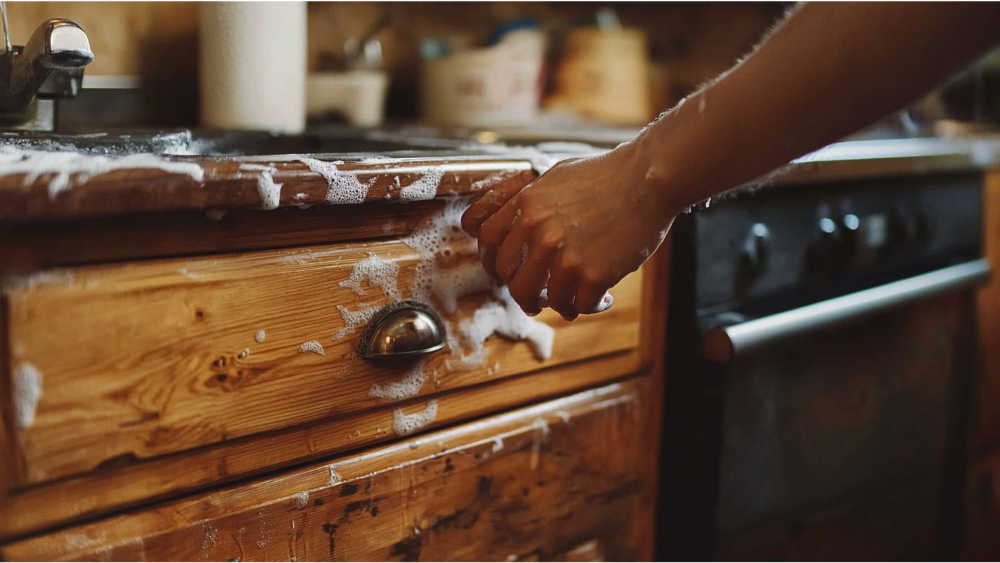
Maintaining wood kitchen cabinets requires care and attention, yet certain common mistakes can hinder their longevity and appearance. Here are a few pitfalls to avoid:
Using Harsh Scrubbing Tools
One of the most significant mistakes is the use of abrasive sponges or scouring pads during cleaning. These tools can scratch and damage the wood furniture finish, leading to dullness and potential long-term wear. Instead, opt for soft cloths or sponges that are gentle on the surface to preserve the cabinet’s integrity.
Neglecting to Test Cleaning Solutions
Another common oversight is failing to test new cleaning products on a small, inconspicuous area before full application. Certain cleaners, even those marketed as safe for wood, could contain ingredients that may affect the finish adversely. Always perform a spot check to ensure compatibility with your cabinets and consider the importance of deep cleaning.
Overlooking Regular Maintenance
Many homeowners make the mistake of waiting too long between cleanings, which can lead to the accumulation of greasy kitchen cabinets that are much harder to remove. Regular maintenance and cleaning routines are essential for preventing build-up and maintaining a fresh appearance. Make it a habit to wipe clean surfaces regularly.
Ignoring Humidity Levels
Finally, an often-overlooked factor is the impact of humidity on wood cabinets. Excess moisture in the air can cause wood to swell, while extremely dry conditions can lead to cracking. Implementing appropriate climate control measures can mitigate these fluctuations and protect your cabinetry from environmental damage, especially after a good deep clean cabinet session.
Frequently Asked How to Clean Wood Kitchen Cabinets Questions
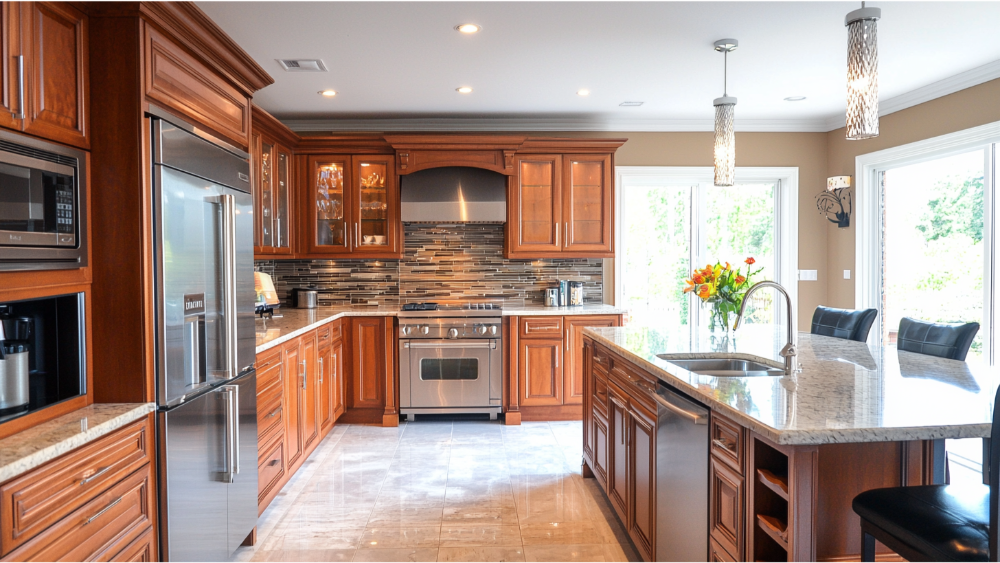
What is the Best Thing to Use to Clean Wood Cabinets?
When dealing with greasy wood cabinets, a gentle yet effective cleaning solution is essential. A mixture of warm water and a few drops of dish soap can break down oily residues without damaging the wood finish. For tougher grime, consider adding vinegar or lemon juice to enhance the cleaning power naturally. Always remember to use a soft cloth to avoid scratching the surface while ensuring thorough drying afterwards.
Can You Use Dawn Dish Soap to Clean Wood Cabinets?
Yes, Dawn dish soap can be an effective option for cleaning wood cabinets, primarily due to its gentle formulation and grease-fighting properties. When using it, mix a few drops of Dawn with warm water to create a soapy solution that effectively cuts through grease and grime without overly saturating the wood. Always use a soft cloth to apply this mixture, ensuring that the cleaning method remains gentle and does not scratch the wood finish.
However, it’s crucial to safely rinse and dry the cabinets after cleaning to prevent any soap residue or moisture from causing damage. Remember that while Dawn is safe for most wood finishes, it is still recommended to test the solution on a small, inconspicuous area first. By taking these precautions, you can maintain the beauty and integrity of your wood cabinets while ensuring a thorough clean.
Is Murphy’s Oil Soap Good for Wood Cabinets?
Murphy’s Oil Soap is a popular choice for cleaning wood surfaces, including cabinets, due to its gentle formulation that effectively removes dirt and grime while preserving the wood’s natural finish. This soap is specifically designed for use on wood and can help restore the shine and beauty of your cabinets. When using Murphy’s Oil Soap, dilute it according to the manufacturer’s instructions and apply it with a soft cloth, ensuring you wipe in the direction of the wood grain. Regular use can help maintain the integrity of your cabinets while providing a beautiful, polished appearance.
However, it’s important to note that while Murphy’s Oil Soap is generally safe for most wood finishes, overuse or improper dilution can lead to a buildup of residue. To avoid this, it’s advisable to follow a consistent cleaning schedule, paired with thorough rinsing techniques, to eliminate any soap remnants. Always perform a spot test in an inconspicuous area before applying it to the entire surface, ensuring compatibility with your specific cabinet finish. By incorporating Murphy’s Oil Soap as part of your cleaning regime, you can effectively maintain the beauty and functionality of your wood kitchen cabinets.
Conclusion
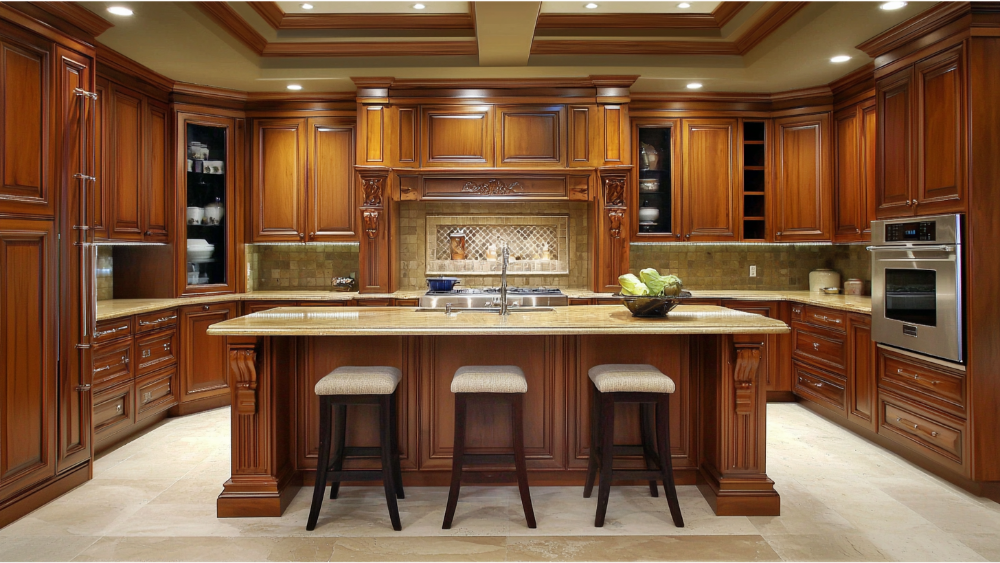
Maintaining wood kitchen cabinets is essential for preserving their beauty and longevity. By implementing the right cleaning techniques and avoiding common mistakes, homeowners can ensure their cabinets remain in excellent condition helping to prolong the need for cabinet replacement. Regular cleaning with gentle substances not only protects the wood’s finish but also enhances its natural charm.
In addition to consistent care, being aware of environmental factors such as humidity can further safeguard cabinetry against damage. By following these best practices, you can enjoy your beautiful wood kitchen cabinets for many years to come, with each cleaning session reinforcing their elegance and functionality.
CONTACT US
Our Services
Areas We Serve
Certificate

